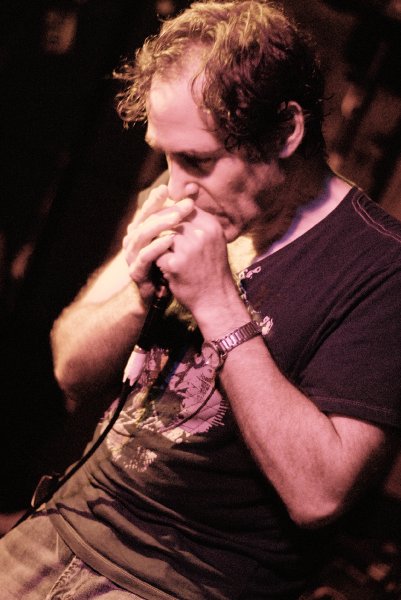
SPAH 1998: A Personal Review, Part 1
This is a brief summary of personal highlights from SPAH 1998. This event, the 35th anniversary convention for SPAH, was held in Detroit, MI, USA from August 26-30, 1998. There was far too much going on at this show for any individual to provide a comprehensive overview, so this report describes only what I saw and heard there.
SPAH’s annual conventions are extraordinary events by any measure. The show presents virtually unlimited opportunities for players at all levels to play with and learn from each other. This in itself is amazing; if there is another event anywhere at which beginning players on any instrument freely mingle with the best players in the world, I don’t know what it is. Couple these learning opportunities with a set of terrific performances and both formal and impromptu jam sessions and you have SPAH.
The overall lineup of performers at this year’s show was remarkably strong, and included top-notch (and in some cases world-renowned) representatives of virtually every style of music. The non-performing attendee list included enough harmonica heavies to fill out the scheduled lineup three or four times over, including blues master Jerry Portnoy, whose resume includes stints with Muddy Waters and Eric Clapton, jazz virtuoso Mike Turk, Kirk “Jelly Roll” Johnson, Rob Paparozzi, Peter “Madcat” Ruth, Toronto-based blues player and Howard Levy disciple Carlos del Junco, bluegrass and rock harp monster Mike Stevens, and New York-based jazz virtuoso Will Galison (who ultimately made the official schedule when illness took another performer off the roster for Saturday night’s show).
In terms of age, attendees at this convention seemed to be concentrated in two groups: 35 to 50, and 65-plus, with the latter group the largest. Only a few attendees seemed to be less than 30 years of age. The dearth of under-30 players may account for the relative absence of players obviously influenced by John Popper. Many of the younger players in attendance were focused on diatonic harmonica, and in particular on the chromatic diatonic style pioneered by Howard Levy. Some of these players were playing very complex chromatic lines on the diatonic harmonica over jazz changes at high speeds. (However, the tone and timbre of individual notes in a line tended to vary significantly for these players.) It’s clear that between Popper’s and Levy’s disciples, the speed barriers that have held relatively steady in diatonic harmonica for the last 40-plus years are being demolished.
I arrived mid-afternoon on Thursday, and therefore missed both Wednesday’s activities and the opening night blues jam that I enjoyed so much last year. I did arrive in time to see Kim Wilson, arguably the best blues harmonica player recording today, who turned in a terrific seminar on Thursday afternoon followed by the best blues harmonica performance I have ever seen on Thursday evening. The seminar included a discussion by Kim of his own approach to the blues, illustrated by performances that included solid Chicago-style amplified harp shuffles and a shattering acoustic harmonica-and-vocal take on Rice Miller’s “Fattening Frogs for Snakes.”
Wilson’s Thursday night performance was nothing less than blues harmonica heaven. I saw Wilson perform with the then-current version of the Fabulous Thunderbirds in San Francisco in September 1997, and was disappointed both with the band (which played in a loud and sometimes crude rock style) and in Wilson’s harp playing, which struck me then as lacking both in quantity and inspiration. On Thursday night Wilson blew the joint down, period. He was backed by a terrific band of young players from Detroit and Chicago; the keyboardist in particular (Ben Wilson, currently with Big Dave and the Ultrasonics, apparently no relation to Kim) was inspired on both piano and Hammond organ. Kim was obviously aware that he was playing to an audience of harmonica players; he commented on the fact when he took out his chromatic harp for one number (joking that he was, of course, going to play it in D minor). Harmonica-wise, he pulled out all the stops, all night long. His solos were long (six or seven choruses per song seemed to be the minimum) and full of details that kept me listening carefully all night, such as his use of open and closed-hand techniques to vary the sound of the harp on both “amped” (as in Chicago-style) and “acoustic” (i.e. using the vocal mic) songs. His singing and bandleading were both great, of course, but the huge quantity of high-quality harmonica was what made the show for this audience.
This is the end of Part 1. Stay tuned for more information on SPAH 1998!
Related Posts
Leave a Reply
You must be logged in to post a comment.
WHAT’S NEW
Categories
- Audio/Video
- Blog
- Blue Future
- Digitech RP Tricks and Tips
- Discography, CDs, Projects, Info, Notes
- Featured Video
- For the Beginner
- Gallery
- Hunter's Effects
- Hunter's Music
- Huntersounds for Fender Mustang
- Meet the Pros
- More Video
- MPH: Maw/Preston/Hunter
- My Three Big Contributions
- Player's Resources
- Pro Tips & Techniques
- Recommended Artists & Recordings
- Recommended Gear
- Recorded Performances
- Reviews, Interviews, Testimonials
- The Lucky One
- Uncategorized
- Upcoming Performances
- Zoom G3 Tips and Tricks
